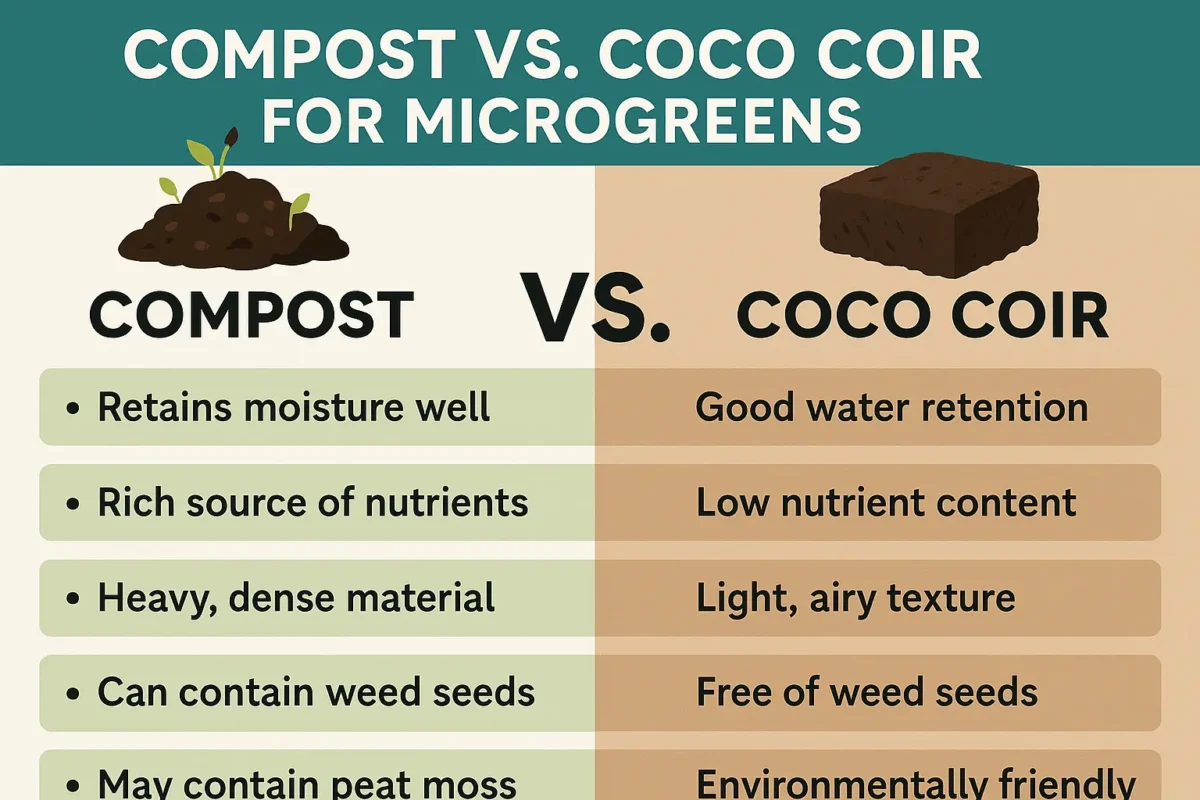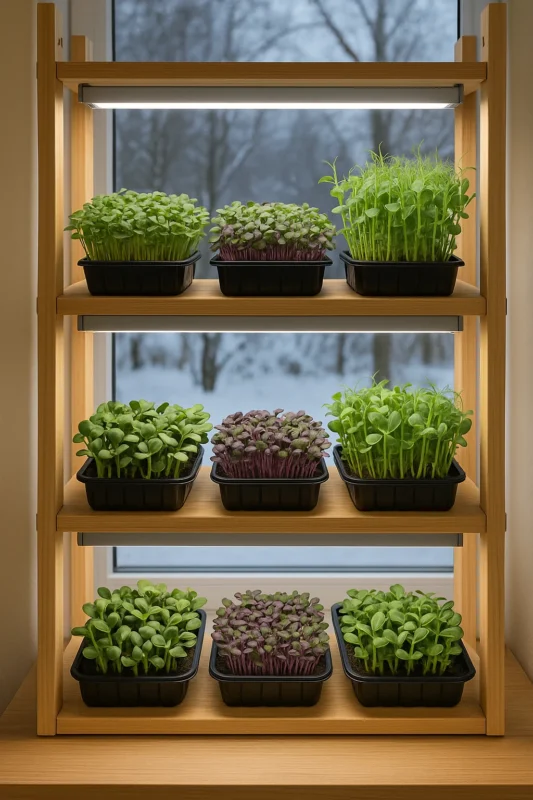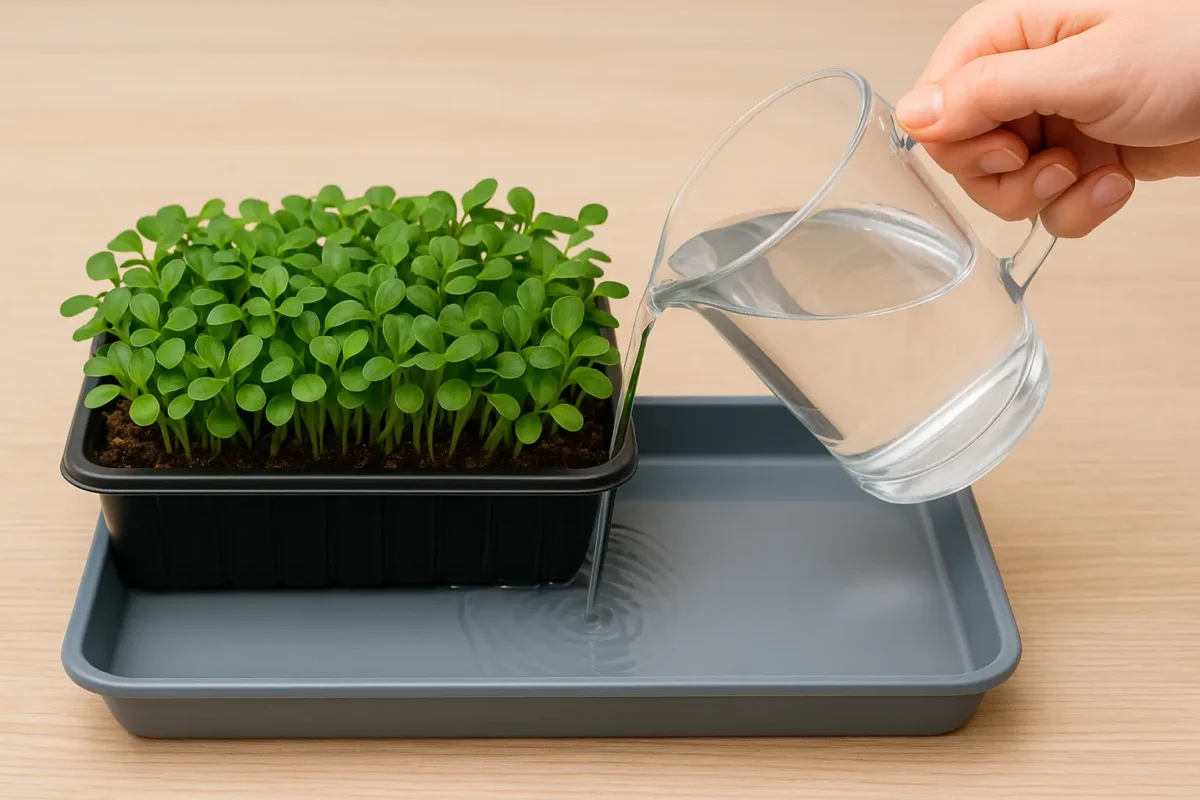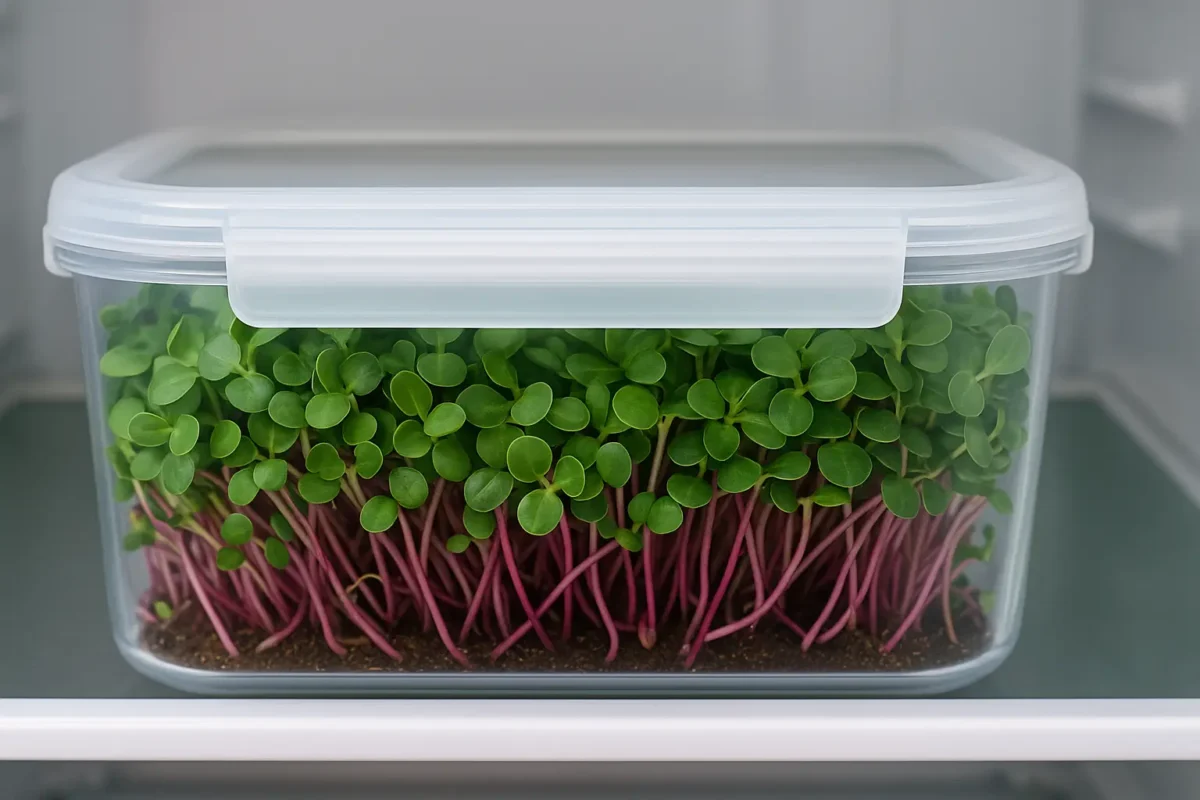Growing microgreens at home is a fun, sustainable, and nutritious hobby that anyone in the UK can enjoy—even without a garden. Whether you’re in a London flat, a semi in Manchester, or a rural cottage in Cornwall, all you need is a bit of light, some trays, and seeds.
Growing microgreens at home is a fun, sustainable, and nutritious hobby that anyone in the UK can enjoy—even without a garden. However, to avoid some of the common microgreens growing mistakes that beginners often make, it’s important to understand the basics. Whether you’re in a London flat, a semi in Manchester, or a rural cottage in Cornwall, all you need is a bit of light, some trays, and seeds.
What Are Microgreens and Why Grow Them?
Microgreens are the tiny seedlings of herbs and vegetables, harvested just after they’ve grown their first true leaves. They pack a punch in both flavour and nutrition, often containing up to 40 times the nutrients of their mature counterparts. Avoiding common microgreens growing mistakes helps ensure you get the most flavour and nutrition from your harvest.
Popular varieties in the UK include:
- Radish
- Broccoli
- Sunflower
- Pea shoots
- Rocket
- Mustard
They’re quick to grow (most in under two weeks), need little space, and are a perfect crop for indoor growing—even in winter.
Useful read:
Royal Horticultural Society: Grow Your Own Microgreens

Mistake #1 – Using the Wrong Growing Medium
The Problem: Compost confusion
One of the first and most frequent common microgreens growing mistakes is using heavy or nutrient-rich compost meant for outdoor plants or mature vegetables. These mixes often retain too much moisture, compact too easily, or contain unsterile elements like fungus gnats or weed seeds, which can harm your delicate microgreens.
The UK Fix: Go sterile and lightweight
Choose a growing medium that is:
- Sterile (to avoid mould and pests)
- Light and airy
- Moisture-retentive but well-draining
Great UK-friendly options include:
- Coco coir – such as Ecothrive Coco Lite
- Hemp growing mats
- Vermiculite blends for hydroponic-style growing
Avoid using soil from your garden, compost bin, or regular multipurpose compost unless it’s been sifted and sterilised.

Mistake #2 – Not Enough (or Too Much) Light
The Problem: Leggy and pale growth
In the UK, one of the common microgreens growing mistakes is not managing light properly. Low light levels—especially from October to March—can result in pale, spindly microgreens that stretch toward light sources and become weak and tasteless. Conversely, too much harsh direct sun, especially through glass, can scorch the delicate leaves.
The UK Fix: Tailor light to the season
Winter growing:
Use full-spectrum LED grow lights such as the popular
Barrina T5 LED grow lights.
Aim for:
- 12 to 16 hours of light daily
- Lights placed 20–30cm above trays
Spring/summer growing:
A bright windowsill facing south or west is usually fine. If possible, rotate trays regularly to encourage even growth and avoid “leaning”.

Also helpful:
RHS Lighting Tips for Indoor Plants
Mistake #3 – Overwatering or Underwatering
The Problem: Root rot or wilting
One of the common microgreens growing mistakes is improper watering. Microgreens don’t need a lot of water—but they do need consistent moisture. Overwatering leads to mould and root rot, while underwatering causes uneven germination and dry, crispy shoots.
The UK Fix: Misting and bottom watering
- During germination (first 2–4 days), mist lightly 2–3 times per day using a fine spray bottle
- After sprouting, switch to bottom watering: place the growing tray into a shallow tray of water for 5–10 minutes, once daily
- Remove excess water to prevent soggy roots
Recommended UK gear:

Mistake #4 – Poor Air Circulation and High Humidity
The Problem: Mould and fungal outbreaks
The UK’s damp climate can contribute to several common microgreens growing mistakes, especially when growing in poorly ventilated kitchens or sheds. Trapped humidity and still air create a mould-prone environment, leading to fungal growth and weak plants.
The UK Fix: Ventilation is key
- Use a clip-on circulation fan (like AC Infinity Cloudray)
- Avoid stacking trays too closely
- Remove humidity domes as soon as seeds sprout
- Keep windows ajar when possible or use passive vents in grow tents
Some growers also dust the surface of their growing medium with cinnamon powder, which has antifungal properties.

Mistake #5 – Harvesting Too Early or Too Late
The Problem: Wrong texture, poor flavour, lower nutrition
One of the most overlooked common microgreens growing mistakes is poor timing at harvest. Harvesting too early means you’ll get a tiny yield and underdeveloped flavour, while waiting too long results in fibrous, bitter, and less visually appealing greens. Timing really matters to get the best from your crop.
The Problem: Wrong texture, poor flavour, lower nutrition
Harvesting too early means you’ll get a tiny yield and underdeveloped flavour. Wait too long and the greens become fibrous, bitter, and less visually appealing. Timing really matters.
The UK Fix: Know your harvest window
Most microgreens are ready between 7 and 14 days after sowing. You’ll want to harvest when the plant has:
- Two cotyledons (round seed leaves), and
- The first set of true leaves just beginning to show
Use clean, sharp scissors and cut just above the growing medium. Do not pull the plants out by the root, as it will disrupt the soil and make a mess.
Approximate harvest times for popular UK microgreens:
- Radish: 6–8 days
- Sunflower: 8–12 days
- Pea shoots: 10–14 days
- Broccoli: 7–10 days

Bonus Tip: How to Store Your Harvest Properly
After harvesting, avoiding one of the common microgreens growing mistakes—improper storage—is key to keeping your microgreens fresh and crisp.
- Place them in an airtight container lined with dry kitchen paper
- Store in the vegetable drawer of your fridge at 2–4°C
- Don’t wash until just before use, or they’ll spoil quicker
Well-stored microgreens can last up to 7 days.
Helpful resource:
Love Food Hate Waste UK – Storage Tips

Final Thoughts: Grow Smart, Eat Fresh
Growing microgreens is incredibly rewarding, especially once you get the hang of the basics. Avoiding these five mistakes will save you time, money, and frustration — and set you up for lush, flavourful harvests every week.
It’s all about:
- Picking the right growing medium
- Giving your plants proper light
- Watering mindfully
- Ensuring air circulation
- Harvesting at the right time
By avoiding common microgreens growing mistakes in these core areas, you can enjoy a continual supply of nutrient-packed greens—perfect for smoothies, salads, garnishes, or sandwiches.
Useful Resources for UK Growers
- Suttons Microgreens Seeds
- Greenhouse Sensation: Microgreens Growing Kits
- EcoThrive Coco Lite (Coco Medium)
- Amazon UK: LED Grow Lights
- Want to learn about microgreens and their impact on health? Read our full guide on the Antioxidant Power of Microgreens →
Want More Growing Tips?
Subscribe to our monthly newsletter for growing guides, seasonal advice, and microgreen recipes created for UK kitchens. Whether you’re a first-time grower or a kitchen-garden pro, we’ve got something to help you grow more with less effort.
